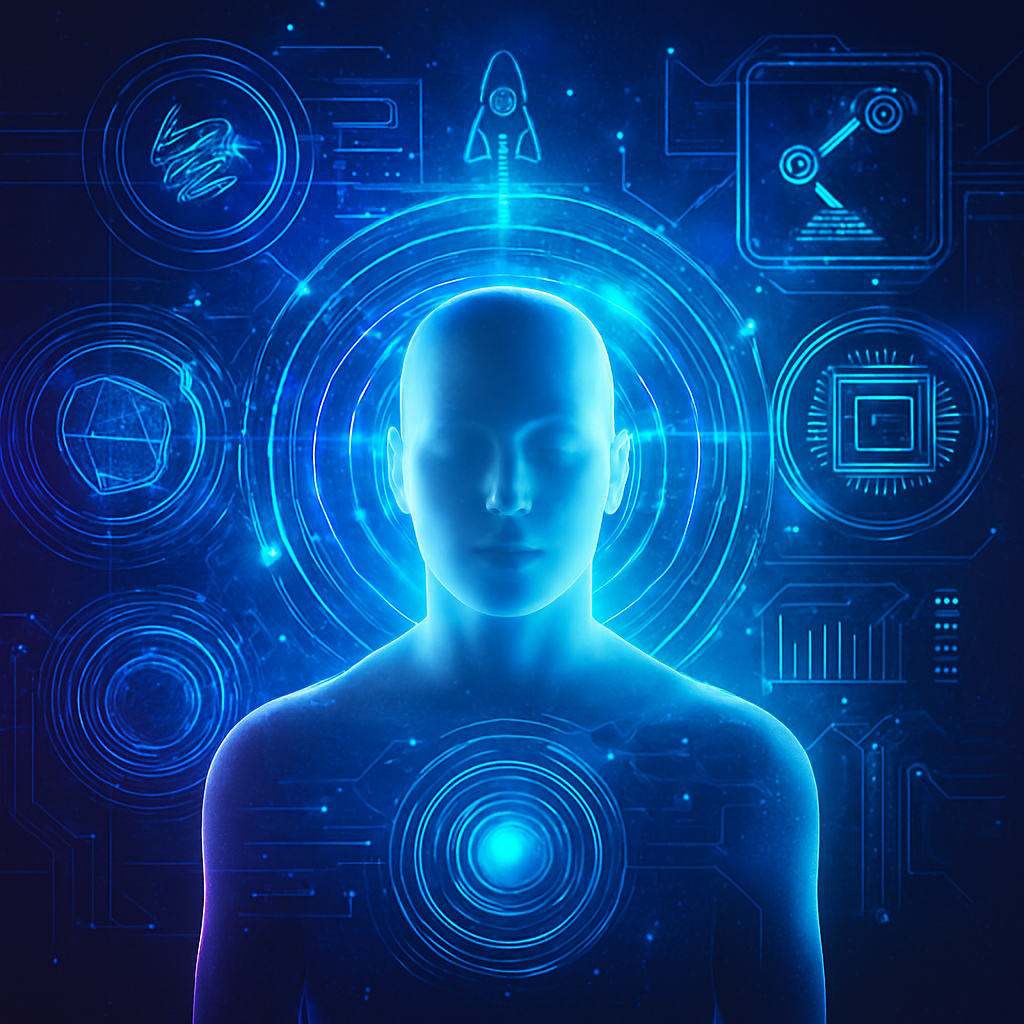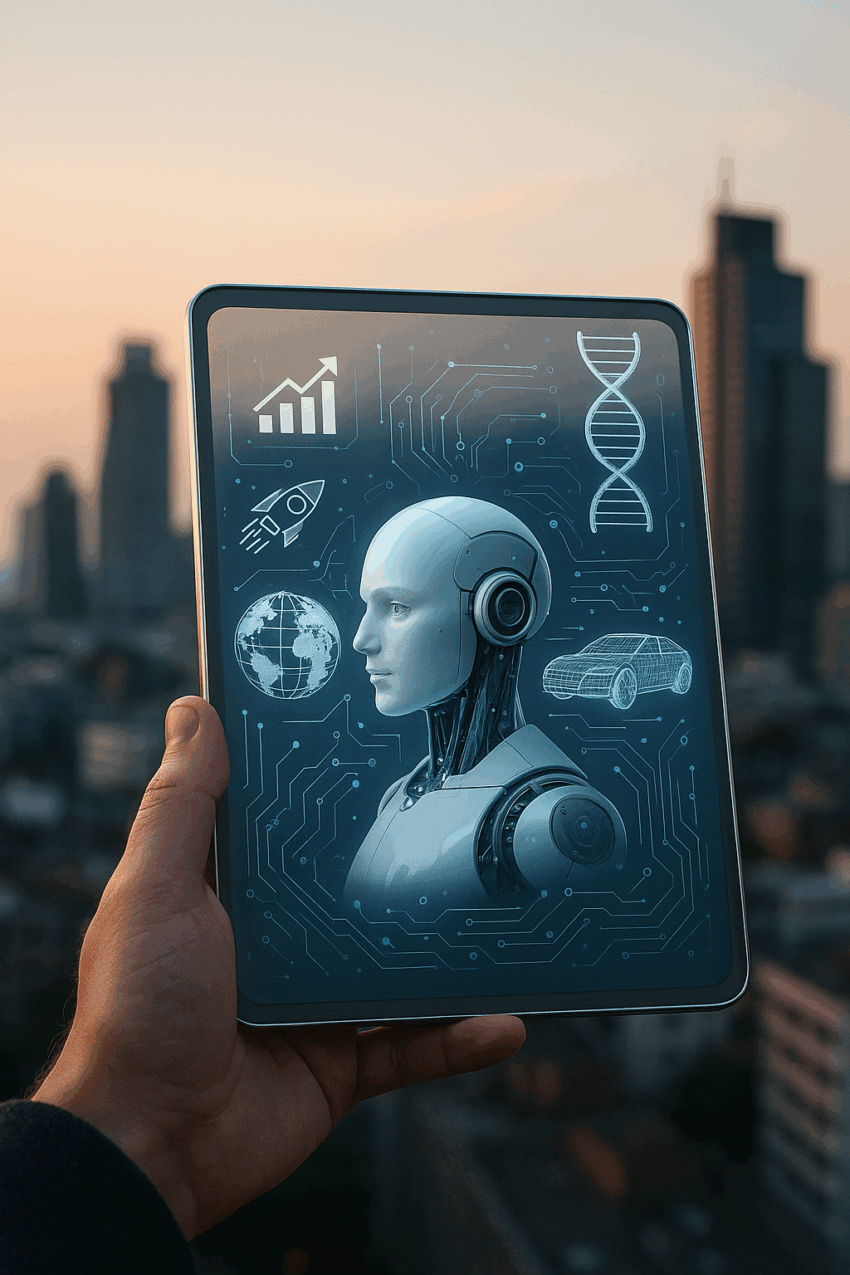The next wave of technological breakthroughs could redefine human civilization, energy, space exploration, and cognition. Unlike the well-known advances of today, these emerging technologies are still largely in research or theoretical phases—but they hold transformative potential.
Here’s a detailed, point-by-point look:
1. Artificial Consciousness
Explanation:
Artificial consciousness refers to machines capable of self-awareness, introspection, and decision-making beyond pre-programmed rules. Current AI can analyze data, learn patterns, and even simulate decision-making, but it lacks subjective experience or awareness of itself.
Why It Matters:
A conscious AI could autonomously innovate, solve complex problems without direct human input, and provide insights into human cognition. It could become a research collaborator, suggesting experiments, optimizing processes, or even helping design new AI systems.
Feasibility (Next 5–10 Years):
Early research may yield proto-conscious AI in controlled environments, capable of self-assessment and reflective reasoning. Applications would likely start in research labs, scientific modeling, and AI-assisted discovery.
Key Enablers:
Advanced neural networks, meta-reasoning architectures, large-scale simulation environments, ethical and regulatory frameworks.
2. Quantum Internet
Explanation:
Quantum internet uses principles like quantum entanglement and superposition to transmit information in ways that are fundamentally secure against eavesdropping. Unlike classical networks, quantum networks could instantly detect interception attempts.
Why It Matters:
A global quantum internet would revolutionize cybersecurity, financial systems, and scientific collaboration, creating unhackable communication networks that are orders of magnitude faster and safer.
Feasibility (Next 5–10 Years):
Pilot networks are already being tested; within a decade, city- and nation-scale networks could be operational, eventually linking continents via satellites.
Key Enablers:
Quantum repeaters, satellite-based entanglement distribution, fault-tolerant quantum nodes.
3. Programmable Matter
Explanation:
Programmable matter consists of materials whose physical properties, shape, and functionality can be dynamically altered through external commands, often using nanoscale actuators or responsive structures.
Why It Matters:
It would transform manufacturing, construction, and robotics, enabling objects to adapt to different tasks on demand, reducing waste and increasing efficiency. Imagine furniture that reshapes itself, aircraft wings that adapt in real time, or surgical tools that morph based on the procedure.
Feasibility (Next 5–10 Years):
Early practical applications are likely in robotics, adaptive prosthetics, aerospace, and flexible consumer products.
Key Enablers:
Nanotechnology, AI-controlled materials, metamaterials, advanced actuator design.
4. Molecular Assemblers
Explanation:
Molecular assemblers are nanoscale machines capable of arranging atoms or molecules to build materials, devices, or even complex biological structures precisely. Think of 3D printing at the atomic level.
Why It Matters:
They could revolutionize material science and medicine, allowing the creation of any chemical compound or complex device with zero waste. Drug discovery, high-strength materials, and energy storage could all accelerate dramatically.
Feasibility (Next 5–10 Years):
Initial experimental devices may assemble small molecules, proteins, or nanostructures. Fully programmable atomic assemblers remain longer-term, but partial implementations could already have profound impact.
Key Enablers:
Nanorobotics, molecular modeling, AI-guided synthesis, advanced sensors.

5. Human Longevity Reversal
Explanation:
Through gene editing, cellular reprogramming, and regenerative therapies, scientists aim to slow or reverse aspects of aging, repair tissues, and restore youthful function.
Why It Matters:
Extending human healthspan could dramatically reduce chronic diseases, increase productivity, and change societal structures like retirement, healthcare, and workforce planning.
Feasibility (Next 5–10 Years):
Targeted therapies could reverse age-related decline in specific tissues or organs, likely starting with the cardiovascular system, nervous system, or skin.
Key Enablers:
CRISPR and other gene-editing tools, stem cell therapies, AI-driven health analytics, regenerative medicine.
6. Mind Uploading and Digital Continuity
Explanation:
Mind uploading involves creating a digital copy of the human brain, capturing memories, thought patterns, and possibly consciousness. This could allow cognitive continuity beyond biological limits.
Why It Matters:
It would transform how humans preserve knowledge, extend cognition, and explore digital existence. Scientists could run simulations on brain models for medical research or cognitive enhancement.
Feasibility (Next 5–10 Years):
Partial digital twins of brain regions or simplified cognitive models could be operational, enabling testing of therapies or AI-assisted augmentation of memory and learning.
Key Enablers:
Brain mapping technologies, high-resolution neural simulation, AI modeling, high-performance computing.
7. Planetary Climate Control Systems
Explanation:
Advanced geoengineering combined with AI could stabilize climate by dynamically managing carbon sinks, aerosols, and atmospheric variables.
Why It Matters:
It could prevent catastrophic climate events, stabilize agriculture, and protect ecosystems, essentially providing a planetary thermostat.
Feasibility (Next 5–10 Years):
Initial small-scale experiments will focus on localized regions; AI-driven monitoring can inform larger interventions over time. Full-scale planetary systems are longer-term goals.
Key Enablers:
Global AI monitoring networks, advanced environmental sensors, predictive modeling, carbon capture technologies.
8. Interplanetary Industrialization
Explanation:
This involves establishing automated factories, mining operations, and manufacturing facilities on other celestial bodies such as the Moon, Mars, or asteroids.
Why It Matters:
Could dramatically expand resource availability, reduce Earth-bound scarcity, and open new economic frontiers, while supporting human colonization and scientific exploration.
Feasibility (Next 5–10 Years):
Autonomous robotics and reusable launch systems may allow pilot facilities on the Moon or Mars for resource extraction and orbital component manufacturing.
Key Enablers:
AI-managed robotics, in-situ resource utilization (ISRU), advanced propulsion, orbital logistics.
9. Unified Field Energy Harnessing
Explanation:
This theoretical technology aims to extract usable energy directly from the quantum vacuum or other fundamental physical fields.
Why It Matters:
If successful, it could provide nearly limitless, clean energy, transforming the global energy landscape and enabling technologies that require extreme power densities.
Feasibility (Next 5–10 Years):
Proof-of-concept experiments in controlled lab environments may emerge. Scalable and practical applications will likely take decades, but early validation would be groundbreaking.
Key Enablers:
High-energy physics research, advanced materials, AI-assisted simulations, quantum field theory.
10. Collective Intelligence Networks
Explanation:
Networks that link multiple human minds or AI-human hybrids to enable real-time collective problem-solving, shared creativity, and group cognition.
Why It Matters:
Could transform research, innovation, governance, and strategic decision-making, creating a new paradigm where human thought is amplified by direct cognitive networks.
Feasibility (Next 5–10 Years):
Small-scale prototypes connecting neural interfaces and AI assistants may enable collaborative intelligence experiments. Broader networks will emerge as interfaces and safety protocols improve.
Key Enablers:
Brain-computer interfaces, AI coordination, secure neural communication protocols, cognitive modeling.
Looking Ahead
These ten technologies may seem speculative today, but they represent active frontiers of research. In the coming decades, breakthroughs in these areas could reshape human civilization, energy production, health, cognition, and even our place in the cosmos.
For innovators, scientists, and decision-makers, understanding and anticipating these technologies is critical. The future isn’t just approaching—it’s being engineered in labs, AI models, and research centers around the world.
This blog post was written with the assistance of Copilot and ChatGPT, based on ideas and insights from Edgar Khachatryan.
